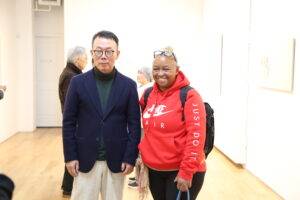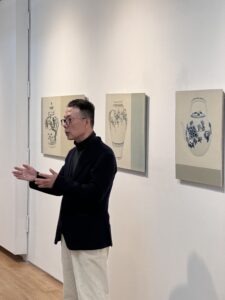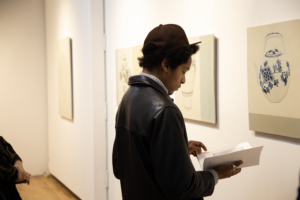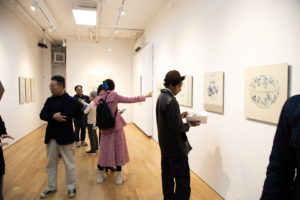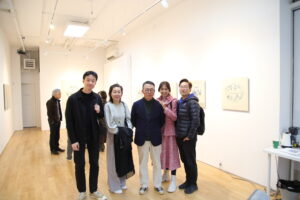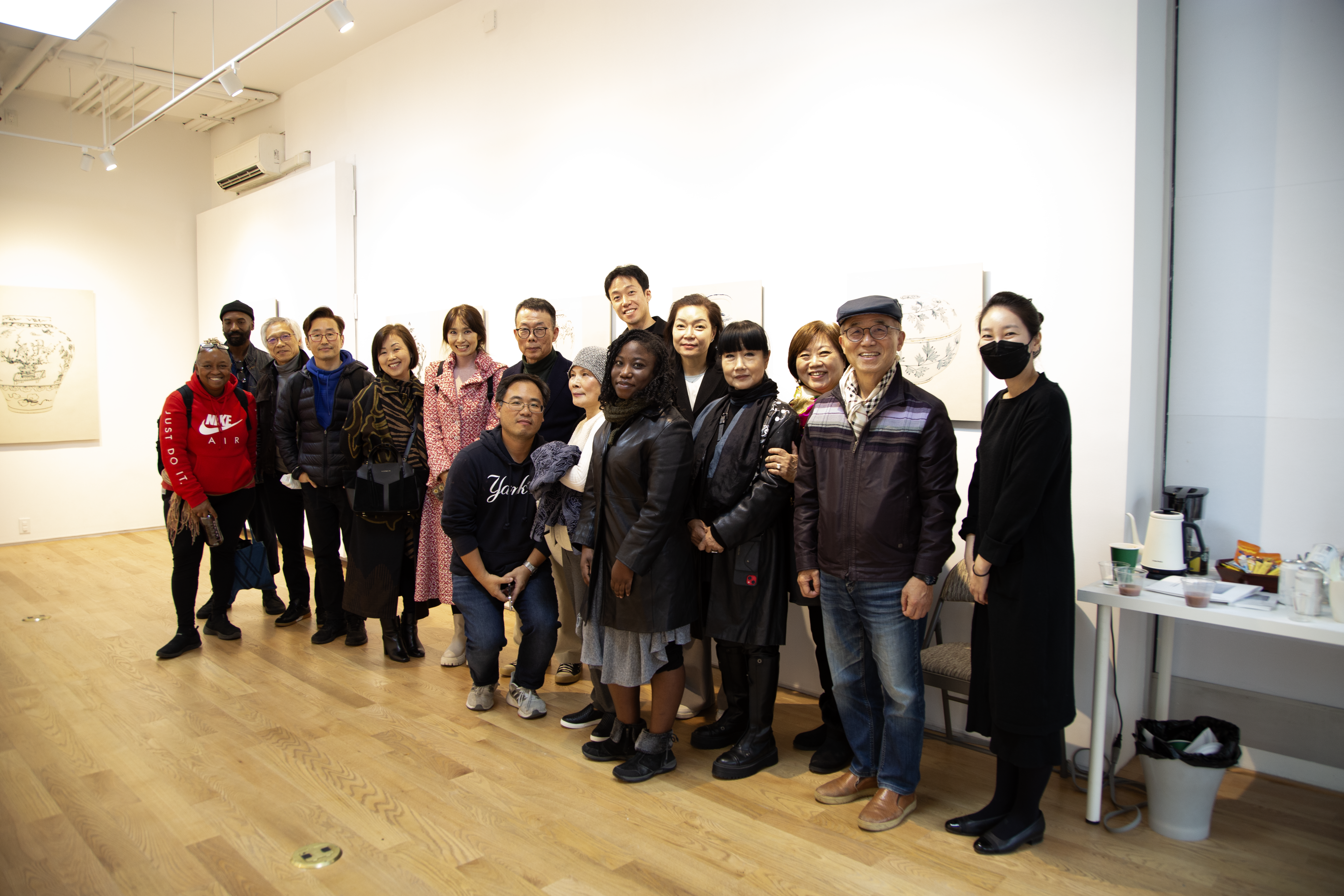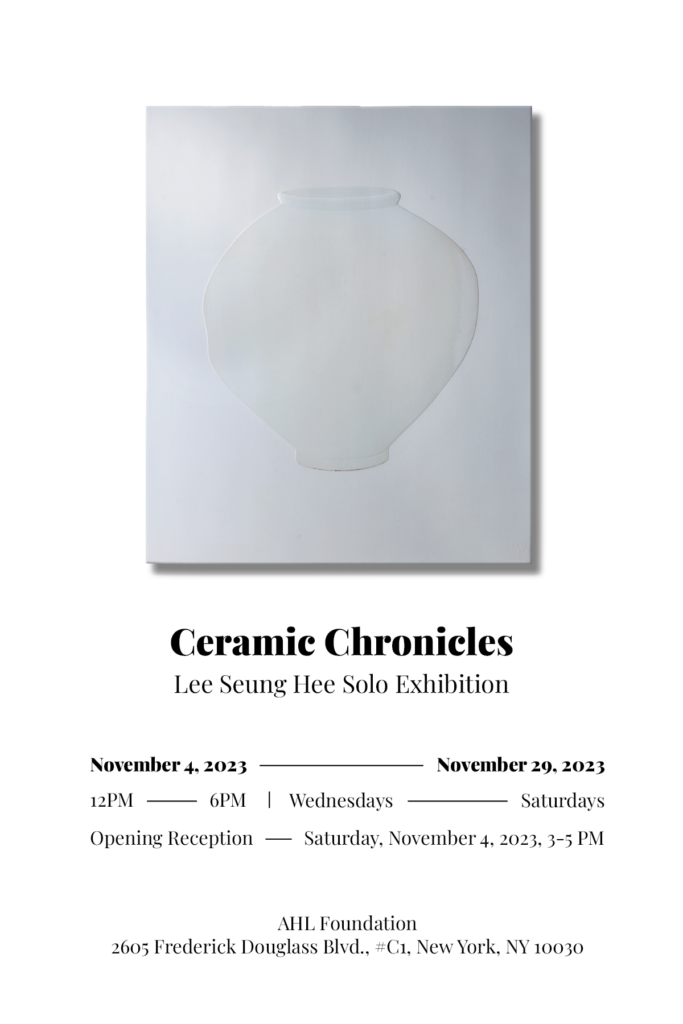
Ceramic Chronicles: Lee Seung Hee Solo Exhibition
- Exhibition Dates: November 4, 2023 – November 29, 2023
- Gallery Hours: 12 PM – 6PM / Wednesdays – Saturdays
- Opening Reception: Saturday, November 4, 2023, 3-5 PM
- Venue: AHL Foundation (2605 Frederick Douglass Blvd., #C1, New York, NY 10030)
Lee Seung Hee was born in 1960 in Cheongju, the capital of North Chungcheong province, South Korea. He trained in the Craft Design Department at Cheongju University, where he studied ceramics, fiber craft, dyeing, and tapestry. His remarkable ceramic works unite the beauty and charm of traditional Korean forms with the more conceptual concerns of contemporary art. As a master of ceramics technique, he creates much of his work in Jingdezhen, in southeastern China, where he established a studio in this historic center of Chinese porcelain production in 2008. Since then he has won international acclaim for his Porcelain Paintings and his Bamboo series. In the Porcelain Paintings, which subject Korean ceramic masterpieces of past Centuries, Lee ingeniously transforms the original three-dimensional objects into stylized, shallow-relief images on porcelain tiles. His subsequent Bamboo series involves the production of thousands of ceramic “bamboo joints” that, when joined together, evoke groves of graceful, freestanding bamboo trees. His most recent ceramic works, the Space of 8mm series, infuse unexpected hints of volume into renderings of folded and layered sheets of paper. Throughout his career, Lee has emphasized motifs, materials, and colors that have strong associations with traditional Asian ceramic works. In this way, he enables viewers to make an imaginative connection between his undeniably contemporary works and the rich heritage of ceramics.
SPACE OF 8MM SERIES
While in his previous series Lee Seunghee has often transformed fully 3-dimensional objects into low-relief ceramic works, Space of 8mm, his most recent group of works, gives a dimensional form to what is ordinarily a flat object—a sheet of paper. He starts by sculpting a flat clay surface with a thickness of 8mm in a variety of sizes and formats. To create the effect of sheets of paper that have been folded or layered upon each other, he applies 10 to 20 layers of the clay/water mixture kaolin to obtain a minimal but discernible “paper-thin” elevation.
Before firing these works in a kiln, he selectively glazes them—for example, applying glaze to the front but not the back of the seemingly folded paper sheets. By employing different colors and thicknesses of glaze, he achieves an astonishing range of rich, subtle hues. An artist who is an undeniable master of ceramic technique, Lee Seunghee says that “I am on my way to finding something which cannot be found in other materials but only in ceramics.”
PORCELAIN PAINTINGS
Lee’s Porcelain Paintings result from a prolonged and technically demanding process. Starting with a blank clay tablet, he painstakingly applies up to 70 extremely thin layers of kaolin, a mixture of white clay and water used in porcelain production. Each layer requires a full day to apply and dry. In the next stage, he carefully isolates a raised central shape by scraping and cutting away the background. In this way, he renders, in shallow relief, the outline of the historic ceramic work that is his subject. After applying, where needed, a traditional ornamental pattern in colored pigment, he glazes and fires the work in a kiln. The entire procedure can take up to 90 days from start to finish.
The Porcelain Paintings imaginatively reinterpret a variety of historic ceramic masterpieces—vases, bowls, jars, dishes, bottles, drinking vessels—from the Joseon Dynasty (1392-1910). The original ceramic objects that Lee depicts include examples of the celebrated white porcelain that made its appearance in the 15th century, and whose elegant minimal forms were prized by the Korean aristocracy. Lee also turns to classic examples of the blue-and-white ware of the same period, noted for the use of cobalt blue pigment to create stylized patterns of birds, dragons, lotuses, and bamboo. In all of his Porcelain Paintings, Lee centers the viewer’s attention on a deceptively simple image whose low relief subtly suggests the actual volume of the original ceramic object. Lee’s works do more than pay deserved homage to the masterpieces of the past. The innovative visual language that he employs reveals a sophisticated sense of spatial play and perceptual paradox–qualities that mark these as unmistakably contemporary works.
THE BAMBOO SERIES
In Asian culture, bamboo has long been identified with such virtues as modesty, integrity, and resilience. Recreating bamboo that is flexible in nature with the fragile and inflexible material, Seunghee creates a tension between natural and man-made, between hard and soft, and between flexible and rigid. Such contrasts reflect a tension within every man.
To create his imposing Bamboo ceramic installations, Lee first sculpts individual “bamboo joints” from clay, then fires them one by one in a kiln, and finally assembles them into groups of freestanding tree trunks. For the most ambitious versions of his bamboo grove installations, which feature ceramic bamboo tree trunks reaching almost 14 feet in height, as many as 10,000 ceramic joints may be needed. The colors that Lee chooses for his bamboo works consciously recall the classic hues of Korean ceramics: white, celadon green, black, and reddish-brown. The artist has made entire “bamboo groves” in black ceramic, with striking results that suggest a traditional ink landscape come to life.
Written by Christopher Phillips, an independent curator and critic
About the Artist
Lee Seung Hee was invited to numerous solo exhibitions including “Synchronicity” and “TAO: Between Dimensions” at Park Ryu Sook Gallery in Seoul, Korea; “Transfiguration” at Waterfall Gallery in NY, USA; “Object beyond Object” at Force Gallery in Beijing, China; “Path” at Wally Findlay Gallery in Palm Beach, FL; “CLAYZEN” at Korean Craft Museum in Cheongju, Korea, and many more. Lee’s works have been exhibited internationally including “Who Will Give an
Answer” at Cheongju Museum of Art in Korea; “Rethinking Craft” at SeMA Nam-Seoul Museum of Art in Seoul, Korea; “Reduction of Sense” at Ozasa Gallery in Kyoto, Japan; “Contemporary Korean Ceramics” at V&A Museum in London, UK; and “International Biennale of Vallauris 2016” in Vallauris, France, among many.
This exhibition was made possible with the support of the Korea Foundation.

